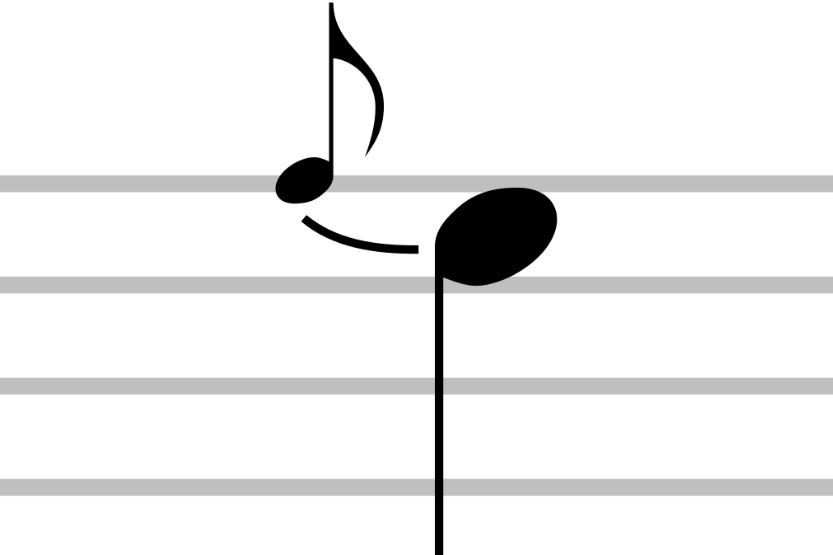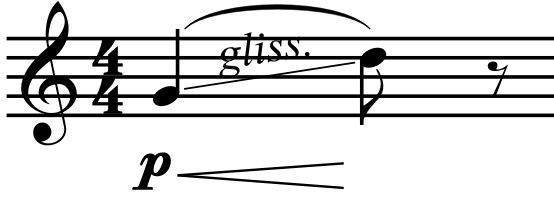Ornaments
Ornaments are decorations that the composer includes to embellish the melody line. In this article, you’ll learn how to recognize these ornaments in sheet music and how to play them.
Mordent
A mordent is 3 note ornament, performed by playing the written note, the note above the written note, and then the written note again. In the case of the mordent written above, the player would play F-G-F. The notes of each ornament are subject to the key signature.
Inverted Mordent
An inverted mordant is a 3 note ornament consisting of the written note, the note below, and the written note again. In the case of the mordent shown above, the notes would be F-E-F.
Turn
A turn is a five note ornament consisting of the written note, the note above, the written note, the note below and the written note again, all performed within a slur. The notes of the turn shown above would be E-F-E-D-E.
Trill
A trill is performed by rapidly oscillating (switching between) two notes. The performer should always trill to the note above the note that’s written. In the case of the trill above, the notes would be E and F. When performing trills, there is no specific number of times that you must go back and forth. It is important to keep the rhythm of the note intact, and simply trill as many times as possible for that duration. Learn more about trills here.
Appoggiatura
An appoggiatura is a 1 note ornament most frequently consisting of the note above or below the written note. An appoggiatura is meant to be treated as an equal member of the tune and should be played the same length as the note it’s attached to. In the case of the appoggiatura shown below, both the F and E would be played as eighth notes. Appoggiaturas are also often meant to be accented.
Acciaccatura
An acciaccatura is similar to an appoggiatura in that it is a 1 note ornament; however, there are two key differences. An acciaccatura should be played much faster than an appoggiatura, and it should not be accented. Acciaccaturas should be played either on or slightly before the beat, depending on the style of piece.
Fingered Tremolo
Fingered tremolo is rapidly changing between two written notes. The difference between a fingered tremolo and a trill is that with a trill you always play the note above the note that’s written, and with a fingered tremolo, you can be changing between any two notes. Fingered tremolos should be performed underneath a slur.
Bowed Tremolo
Bowed tremolo is moving the bow in very short, rapid strokes, most often done at the tip of the bow. Bowed tremolo is most often seen in an orchestral setting and is meant to create an effect. To learn more about both fingered and bowed tremolo, check out my article all about tremolo.
Glissando
A glissando is an audible slide between two notes, often done with the same finger.
Watch the video below for a demonstration of each ornament.









